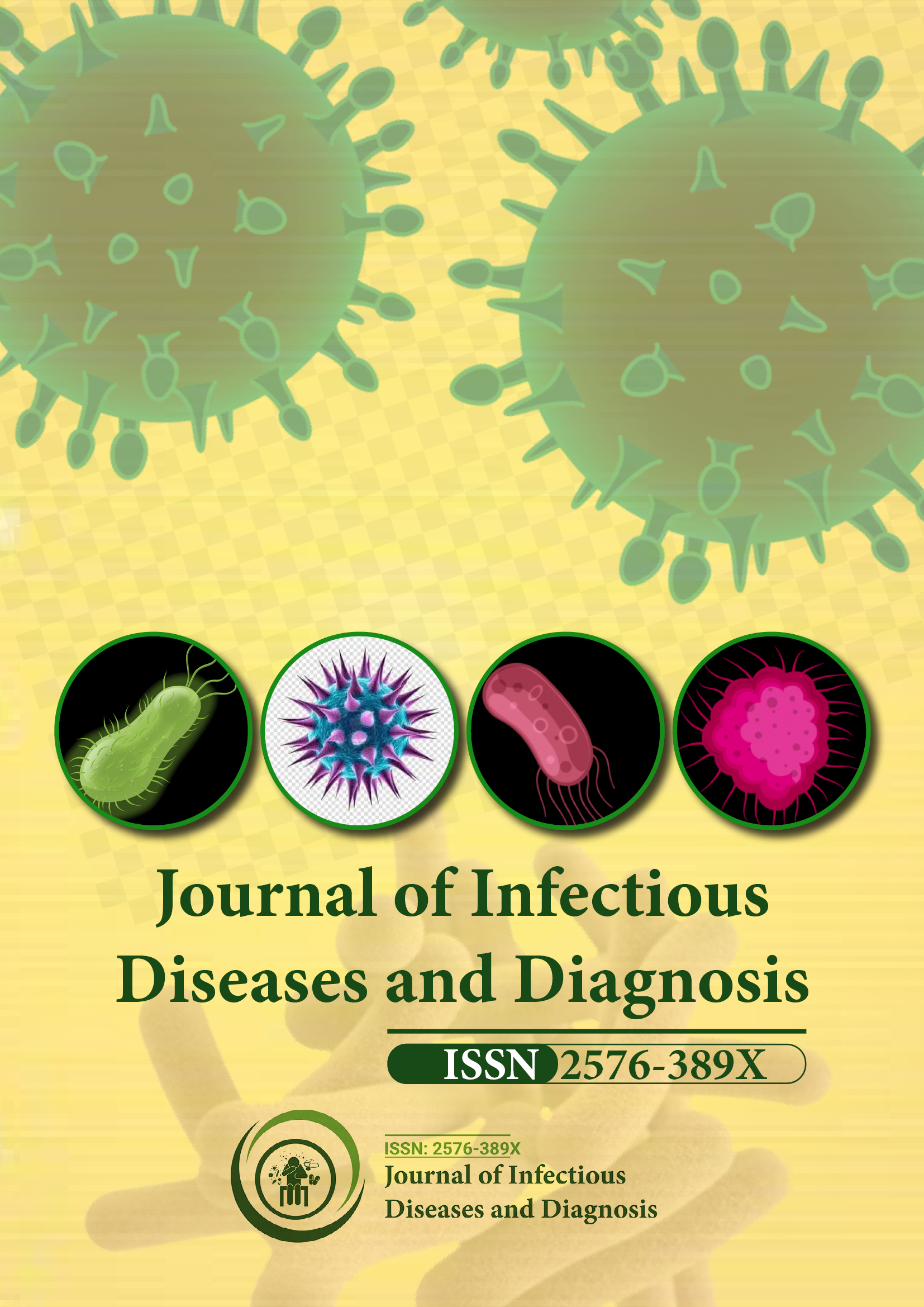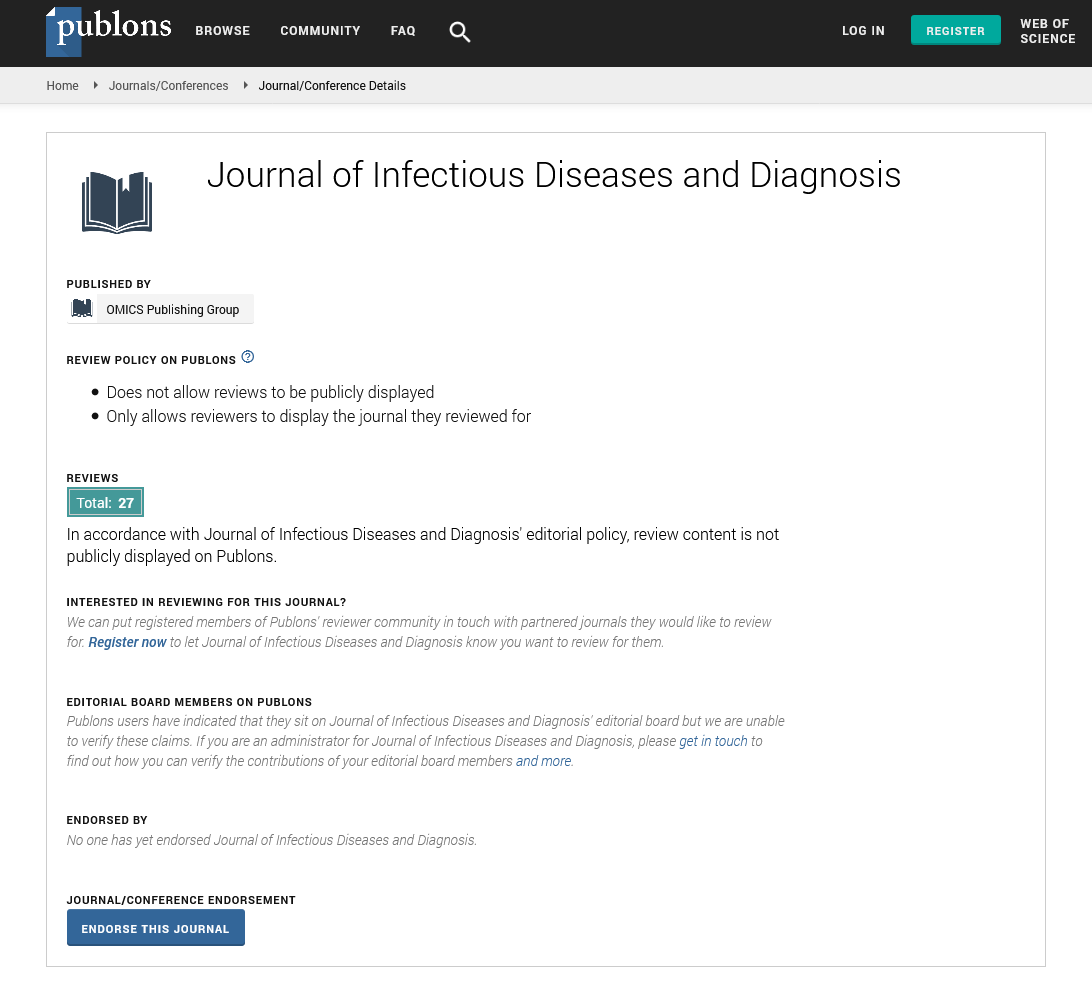Indexed In
- RefSeek
- Hamdard University
- EBSCO A-Z
- Publons
- Euro Pub
- Google Scholar
Useful Links
Share This Page
Journal Flyer

Open Access Journals
- Agri and Aquaculture
- Biochemistry
- Bioinformatics & Systems Biology
- Business & Management
- Chemistry
- Clinical Sciences
- Engineering
- Food & Nutrition
- General Science
- Genetics & Molecular Biology
- Immunology & Microbiology
- Medical Sciences
- Neuroscience & Psychology
- Nursing & Health Care
- Pharmaceutical Sciences
Perspective - (2023) Volume 8, Issue 1
Clinical Characteristics and Risk Factors Evolved in Transmission of Norovirus Infection
Janine Michel*Received: 02-Jan-2023, Manuscript No. JIDD-22-19895; Editor assigned: 04-Jan-2023, Pre QC No. JIDD-22-19895 (PQ); Reviewed: 18-Jan-2023, QC No. JIDD-22-19895; Revised: 25-Jan-2023, Manuscript No. JIDD-22-19895 (R); Published: 01-Feb-2023, DOI: 10.35248/2576-389X.23.08.194
About the Study
Norovirus is a highly contagious virus that causes acute gastroenteritis, an inflammation of the stomach and intestines. The virus is responsible for a significant number of cases of acute gastroenteritis globally each year and is a leading cause of foodborne illness.
The symptoms of norovirus infection are similar to those of other types of acute gastroenteritis, including nausea, vomiting, diarrhea, stomach cramps, and a low-grade fever. In some cases, people may also experience headache, body aches, and fatigue. The illness caused by norovirus is usually self-limiting and lasts for one to three days, but in some cases, complications such as dehydration can occur.
One of the most striking features of norovirus infection is its contagiousness. The virus is primarily spread through the fecaloral route, which means that it can be contracted by ingesting food or water that has been contaminated with the feces of an infected person. It can also be spread through contact with surfaces or objects that have been contaminated with the virus, and then touching the mouth. This makes norovirus particularly common in enclosed spaces such as cruise ships, nursing homes, and schools, where people are in close proximity to each other and the virus can easily spread from person to person. It is also common in settings where food is handled, such as restaurants and catering facilities.
The ease with which norovirus can be spread has significant public health implications. Outbreaks of norovirus can occur quickly and cause significant illness and economic burden. In addition, the virus can be difficult to control once it has spread, as it can survive on surfaces and in the environment for long periods of time.
Prevention of norovirus infection primarily involves good hygiene practices. This includes washing hands thoroughly and frequently, especially after using the bathroom and before handling food. It is also important to clean and disinfect any surfaces or objects that may have been contaminated with the virus. In addition, people who are infected with norovirus should stay home until they are symptom-free for at least 48 hours to avoid spreading the virus to others.
Despite the importance of norovirus and the significant burden it places on public health, there is currently no specific treatment for norovirus infection and no vaccine to prevent it. This highlights the need for continued research into the virus, including the development of effective treatments and a vaccine.
In addition to the public health implications, the economic burden of norovirus should not be overlooked. The virus can have a significant impact on businesses, particularly in the food and hospitality industries, as outbreaks can lead to closures and lost revenue. This highlights the importance of implementing effective prevention and control measures, not just for public health reasons, but also for economic reasons.
Overall, norovirus is a highly contagious and significant public health issue. It is important to be aware of the risk of norovirus infection and to take preventive measures to stop the spread of the virus and protect yourself and others from becoming ill. The lack of specific treatment and vaccine for norovirus highlights the need for continued research in this area.
Citation: Michel J (2023) Clinical Characteristics and Risk Factors Evolved in Transmission of Norovirus Infection. J Infect Dis Diagn. 8:194.
Copyright: © 2023 Michel J. This is an open-access article distributed under the terms of the Creative Commons Attribution License, which permits unrestricted use, distribution, and reproduction in any medium, provided the original author and source are credited.

